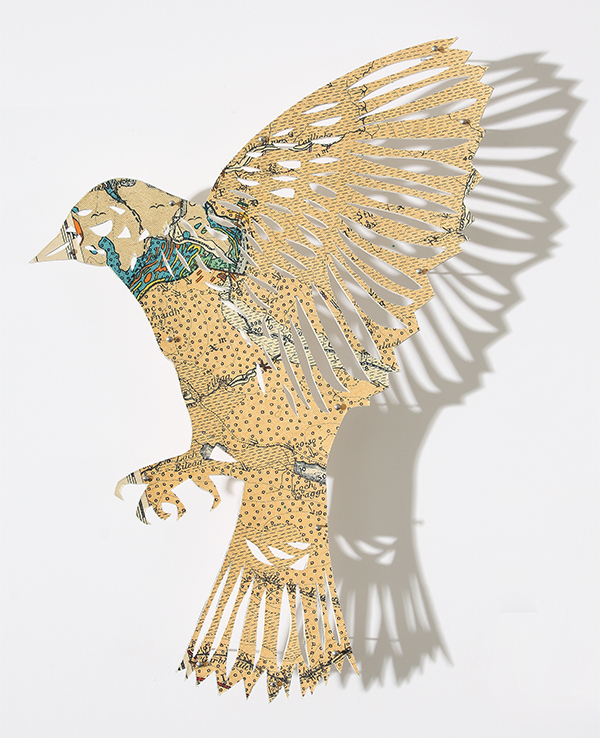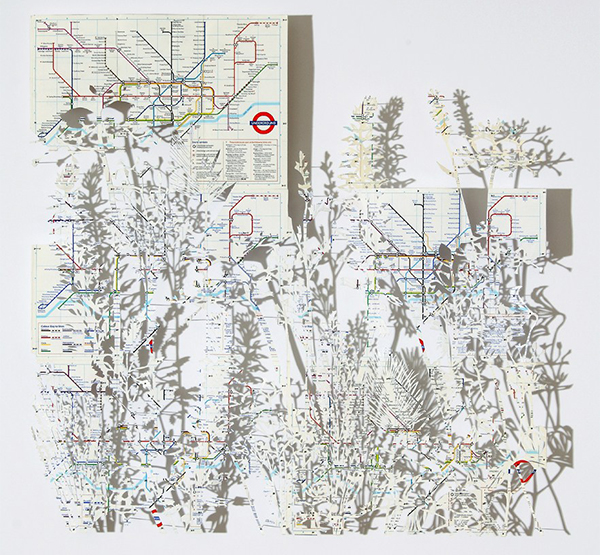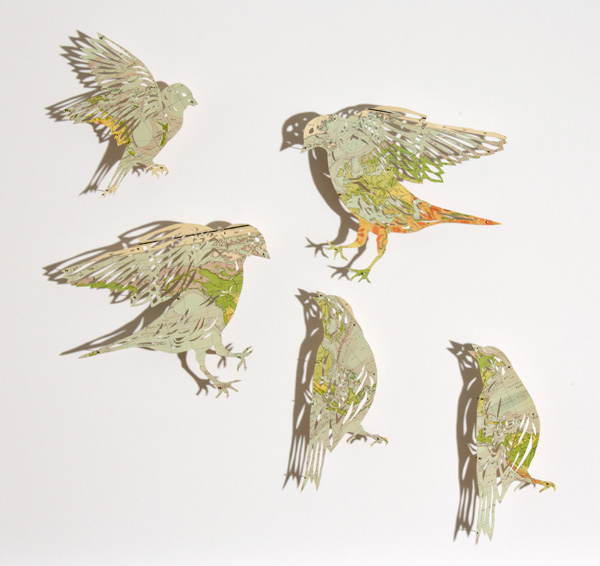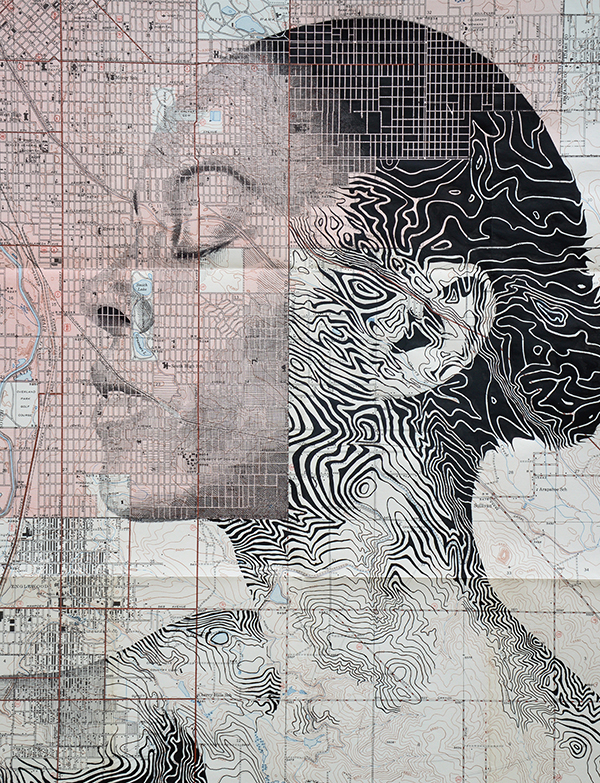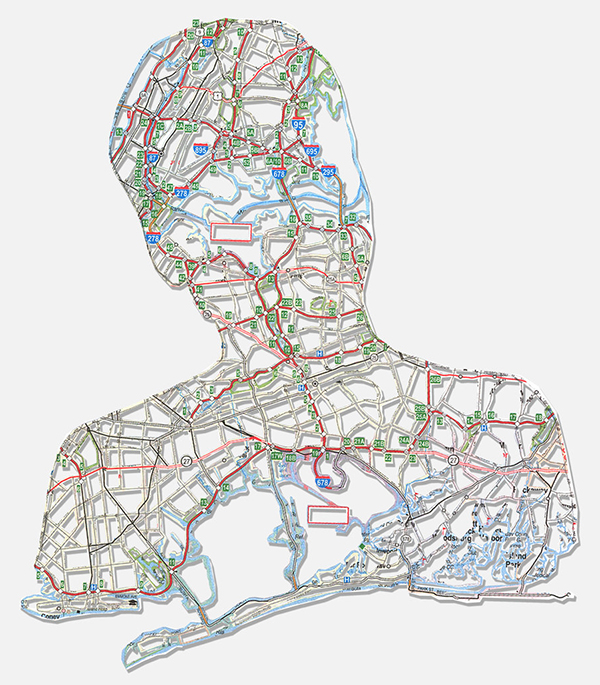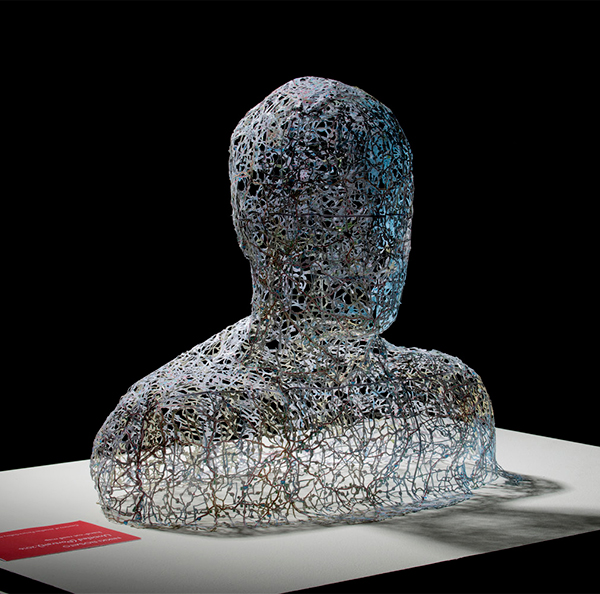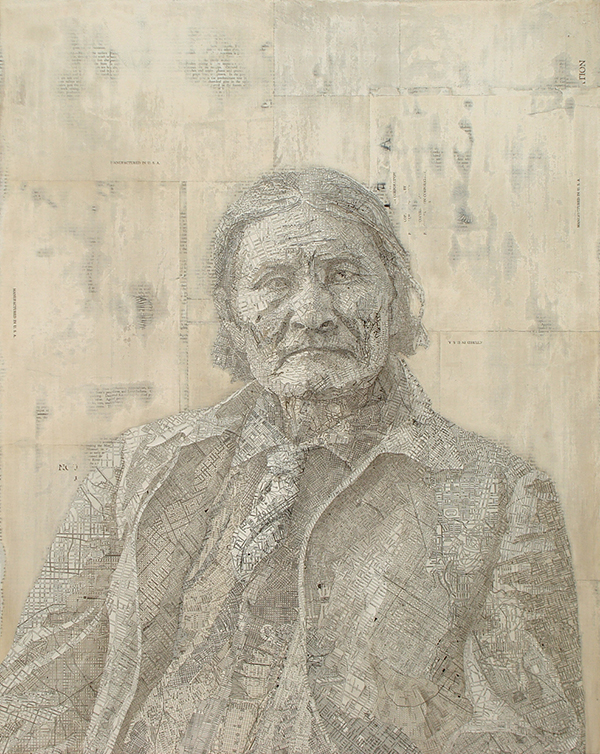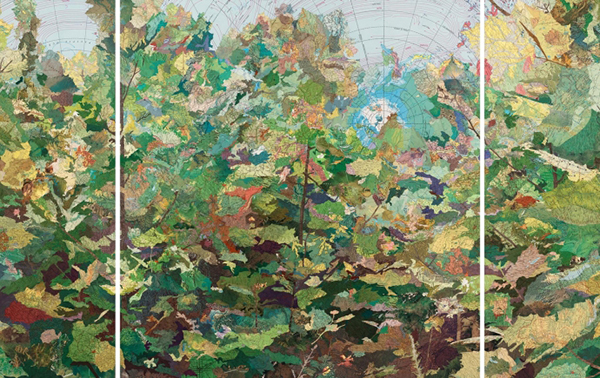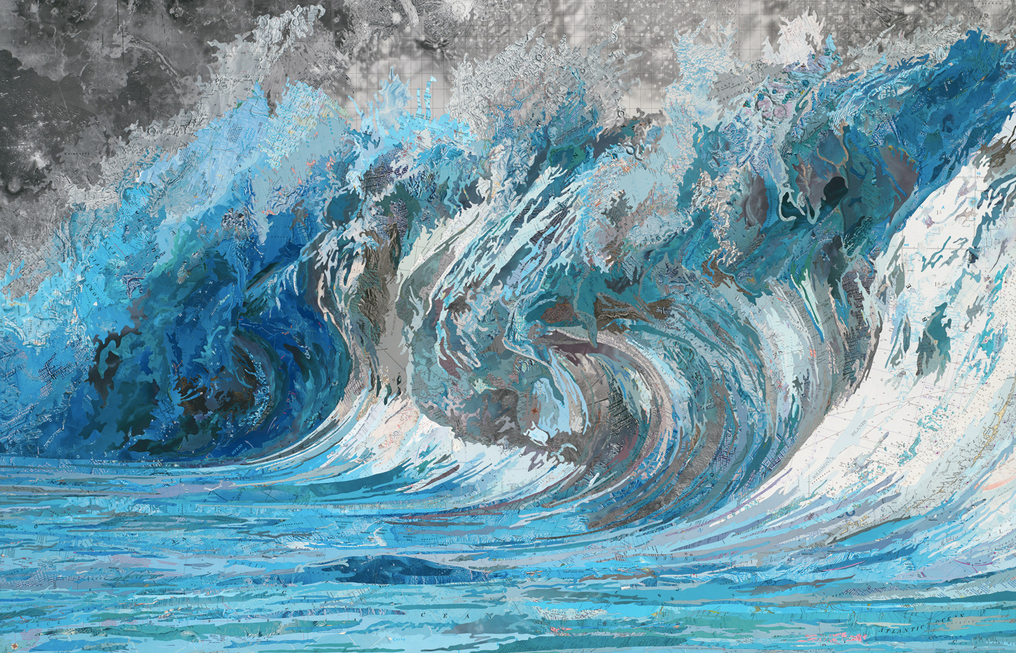 Remember the days before Google maps? The paper variety may now be stashed away in the depths of the attic, but could be given new life as art. The artists in this post aren’t choosing old maps to save paper. They believe they are able to express something through that medium, that couldn’t be achieved any other way. Where others see something unremarkable and disposable, creatives see a beautiful material. Take a look at these skilled paper artists who are doing magical things with old maps and atlas pages.
Remember the days before Google maps? The paper variety may now be stashed away in the depths of the attic, but could be given new life as art. The artists in this post aren’t choosing old maps to save paper. They believe they are able to express something through that medium, that couldn’t be achieved any other way. Where others see something unremarkable and disposable, creatives see a beautiful material. Take a look at these skilled paper artists who are doing magical things with old maps and atlas pages.
Claire Brewster
Claire Brewster is both a painter and paper artist. She sees ‘the artist’ as an outsider, and therefore ‘ideally placed for picking up that which has been chucked out.’ Claire uses old and out of date maps and atlases to create intricate, delicate and detailed cut outs. They are about, ‘retrieving the discarded, celebrating the unwanted and giving new life to the obsolete’, she says.
Claire takes here inspiration from the environment and uses old maps to create entomological installations of flora and fauna from imagined locations. Her birds, insects and flowers ‘transcend borders and pass freely between countries with scant regard for rules of immigration or the effects of biodiversity’. This body of work she calls paper sculptures aims to remind us that nature is present even in the most urban environments.
Be sure to also check out Claire’s new body of work which combines collage with paint, recently featured on The Jealous Curator.
▲
Ed Fairburn
Ed Fairburn brings a whole new meaning to the ‘face of the earth’. He uses ink and pencil on maps to create incredible large scale portraits. Rivers and roads are utilised to sculpt the drawings and map out the contours of the face. He says,
I study both the physical attributes of the terrain and the features of my chosen subjects. I search for opportunities to synchronise the two, finding similarities between the patterns, before drafting out the portrait and building the tone.
In the work Denver Southbound pictured above, two techniques have been combined. Ed uses ink over a USGS topographic map of South Denver. He says,
The crosshatching between streets, preserves the layout of towns and cities, but also follows and manipulates the weighting of contours, the organic lines which show elevation.
The work Anna Karina (first image in this post) was inspired by French new wave films by Jean-Luc Godard.
▲
Nikki Rosato
For Nikki Rosato, road maps are her medium of choice for both two and three-dimensional art works. She began using them in her work because she felt they were able to illustrate the complexities of human relationships, our attachment to place, whilst curiously resembling the lines and vessels of the human body. Her technique involves removing the land masses from the maps, so that only the roads and rivers remain.
In her artist’s statement, Nikki says,
The visual aspects of a road map are remarkably human. A map is a symbol of a living, breathing, moving body—the land is just as alive as we are. A map’s lines carve the pathways for the rhythms and movements that undulate across the surface of the earth.
As we move though life, the places we inhabit and the people that we meet alter and shape us into the person that we are in the present day. I am interested in the idea that a place I visited as a child has affected the outcome of the person that I am today.
▲
Matthew Cusick
Dallas-based artist Matthew Cusick began collecting maps after graduating in 2001. He now uses them to create incredibly detailed collages ranging from portraits and fantastical landscapes to cityscapes and abstract scenes. According to the Pavel Zoubuk gallery, Matthew’s collages address a range of subjects. These include:
…the nihilistic and celebrity driven culture of Hollywood, and the male-dominated worlds of muscle cars and surfing. He is captivated by the geography of American culture. Cars, freeways, golf courses, ocean waves, and infamous icons and archetypes have all been recurrent themes in his work.
See also some of his amazing seascapes, featured previously here.
 Waldeinsamkeit (which translates as ‘forest’, ‘solitude’ and ‘loneliness’). This is a 4 x 10ft triptych, based on two photos the artist took in Virginia, whilst on a road trip in the 1990s. He chose to depict this subject because the memory of the moment was so vivid. He describes the changing patterns of light and forest swirling around him as ‘extremely powerful, transcendental and almost hallucinogenic.’
Waldeinsamkeit (which translates as ‘forest’, ‘solitude’ and ‘loneliness’). This is a 4 x 10ft triptych, based on two photos the artist took in Virginia, whilst on a road trip in the 1990s. He chose to depict this subject because the memory of the moment was so vivid. He describes the changing patterns of light and forest swirling around him as ‘extremely powerful, transcendental and almost hallucinogenic.’
Another subject favoured by Cusick is the depiction of dramatic waves inspired by Japanese motifs. Pictured below – Genevieve’s Wave (2014)
▲
Jennifer Collier
 Jennifer Collier is a paper artist who makes objects by weaving, waxing and stitching natural and found materials. Her creations represent all kinds of everyday objects. As well as cameras and dresses, she has made suitcases, tea sets and even a typewriter, all from found papers.
Jennifer Collier is a paper artist who makes objects by weaving, waxing and stitching natural and found materials. Her creations represent all kinds of everyday objects. As well as cameras and dresses, she has made suitcases, tea sets and even a typewriter, all from found papers.
Paper is sourced from flea markets and charity shops. Jennifer’s largest work to date is a dress that was 4.5 metres long. Works can be purchased online via her website.
▲
See more in depth features on Claire Brewster and Jennifer Collier in the book Upcyclist:Reclaimed and Remade furniture lighting and interiors*
This post contains affiliate links marked with [*].
Thanks for supporting Upcyclist.co.uk

